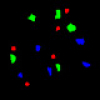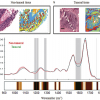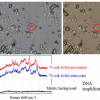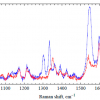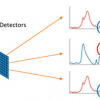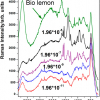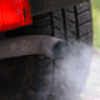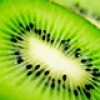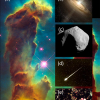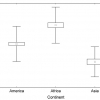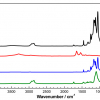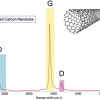Articles
“From lake ecology to biofuels—applications of Fourier transform infrared spectroscopy to algal research” is the topic of Andrew Dean, Jon Pittman and David Sigee. Algae are essential for our continued live on Earth, and FT-IR spectroscopy can increase our understanding of their physiology and biotech potential.
Near infrared hyperspectral imaging for foreign body detection and identification in food processing
With continuing food scares around the world, food producers need every tool they can get to prevent contamination of their products at every stage of production. Hyperspectral reflectance imaging in the NIR combined with chemometrics shows much promise for the detection and identification of foreign bodies among food grains.
Sotiris Stasinos and Ioannis Zabetakis have used ICP-MS to investigate the cross-contamination of food crops by heavy metals in ground or irrigation water. They show that this can occur easily in certain crops, which has serious health consequences for those consuming the food crop. As a consequence of their work, the European Food Safety Authority (EFSA) has been informed about the accumulation of Cr and Ni in food tubers and is taking action.
This article describes an application of spectral imaging for the differentiation of tumour and normal cells. The authors also introduce the concept of a spectral barcode, which has had success with some tissues and has potential in others.
The single cell Raman spectrum (SCRS) enables cell probing and sorting to study phenotypes and ecophysiology of single cells and explore individual cells in situ in a label-free and non-destructive manner.
In resonance Raman scattering (RRS), the amount of structural and chemical information deduced can be increased by analysing the polarisation of the inelastically scattered light, including the degree of molecular aggregation in bio-molecules in their natural environment.
There are a number of approaches, and by combining FT-IR imaging methodology with microfluidics devices, the opportunity to study live cells by FT-IR imaging in controlled environments is now possible.
This article explains the challenges in pesticide residue analysis of samples associated with suspected poisoning incident investigations, including the wide range of specimens and pesticides that need to be considered.
Thiabendazole (TBZ) is a chemical fungicide and parasiticide used to prevent mould, blight and other diseases resulting from long transportation and storage, largely used as an ingredient in waxes applied to the skins of citrus fruits. The authors describe their work using near infrared-surface-enhanced Raman spectroscopy and conventional Ag nanoparticles, which showed that TBZ was found both on organic fruit and at levels higher than regulations allow.
In this article we learn of a new definition for “bath salts”, and how modern mass spectrometry instrumentation can provide rapid and quantitation of these “designer” drugs.
Both the size and chemical composition of airborne particles have an effect on human health. Whilst the effects of size have been much studied, many of the toxic chemicals in particles are at very low concentration and have been less studied. Monitoring their composition and concentration over time helps to determine their source. Synchrotron radiation-induced XRF spectrometry proves to be a good tool for this purpose.
Bread is the major contributor to Na intake in the human diet. For this reason, it is expected that lowering the amount of salt in bread may lead to a substantial reduction in the sodium intake. However, lowering the amount of salt in bread has an impact on the flavour. Using LIBS, a fast and easy-to-use method could be set up to determine Na distribution in baked bread as an innovative tool to help the development of methods to reduce total sodium content in bread.
Tip-enhanced Raman spectroscopy (TERS) and tip-enhanced Raman mapping (TERM) can be used advantageously to investigate the carbon allotropes graphene and single-walled carbon nanotubes, with a spatial resolution in the nanometre range
Fuels and the taxes raised from their sale are a big business around the world. To control smuggling, counterfeiting, theft and product diversion, markers can be placed in the fuel. The use of a SERS active compounds as markers is described as well as the development of a portable instrument for detection of the markers in the field.
Many analytical methods have been used to control the quality, authenticity and origin of fresh fruit. NMR methodologies yield a comprehensive metabolic profile, provide direct structural information regarding individual metabolites in the mixture and also give information regarding the water state in the tissue. This is useful in discriminating various fruits varieties, in investigating nutritional properties, in monitoring the development of the fruit and in assessing the optimum harvesting time.
Chemical modification of wood by methods such as acetylation is required to improve characteristics such as photosensitivity and combustibility, and to provide harmonisation of wood properties in order to avoid swelling and shrinking and to improve biodegradability. The authors describe the use of mid and near infrared spectroscopies to monitor chemical changes due to acetylation is described.
This article shows that pyrolysis techniques, in combination with spectroscopy, are helping our understanding of how the organic matter in our solar system came to be. Fascinatingly, they also show how secondary processing of meteorite materials seems to enhance the abilities of atmospheres to host life on planetary surfaces as well as providing the raw materials from which life could originate.
The use of isotope ratio mass spectrometry is on the rise, with more papers published and more labs with the facilities. The authors describe the main IRMS studies conducted on seeds and isotopes and outline the most important aspects of the use of seeds to study plant eco-geochemistry and plant material traceability.
The presence of “particles” in protein pharmaceuticals (biologics) can cause severe, unwanted effects in the drug. The article describes the use of mid-infrared micro-spectroscopy for the investigation and chemical characterisation of single particles in these biologics.
This article explains what is represented in a Raman spectrum of carbon nanotubes and how to optimise the measurement. There is actually significant diversity within samples of nanotubes which affects both the material properties and the Raman spectrum of the material.


